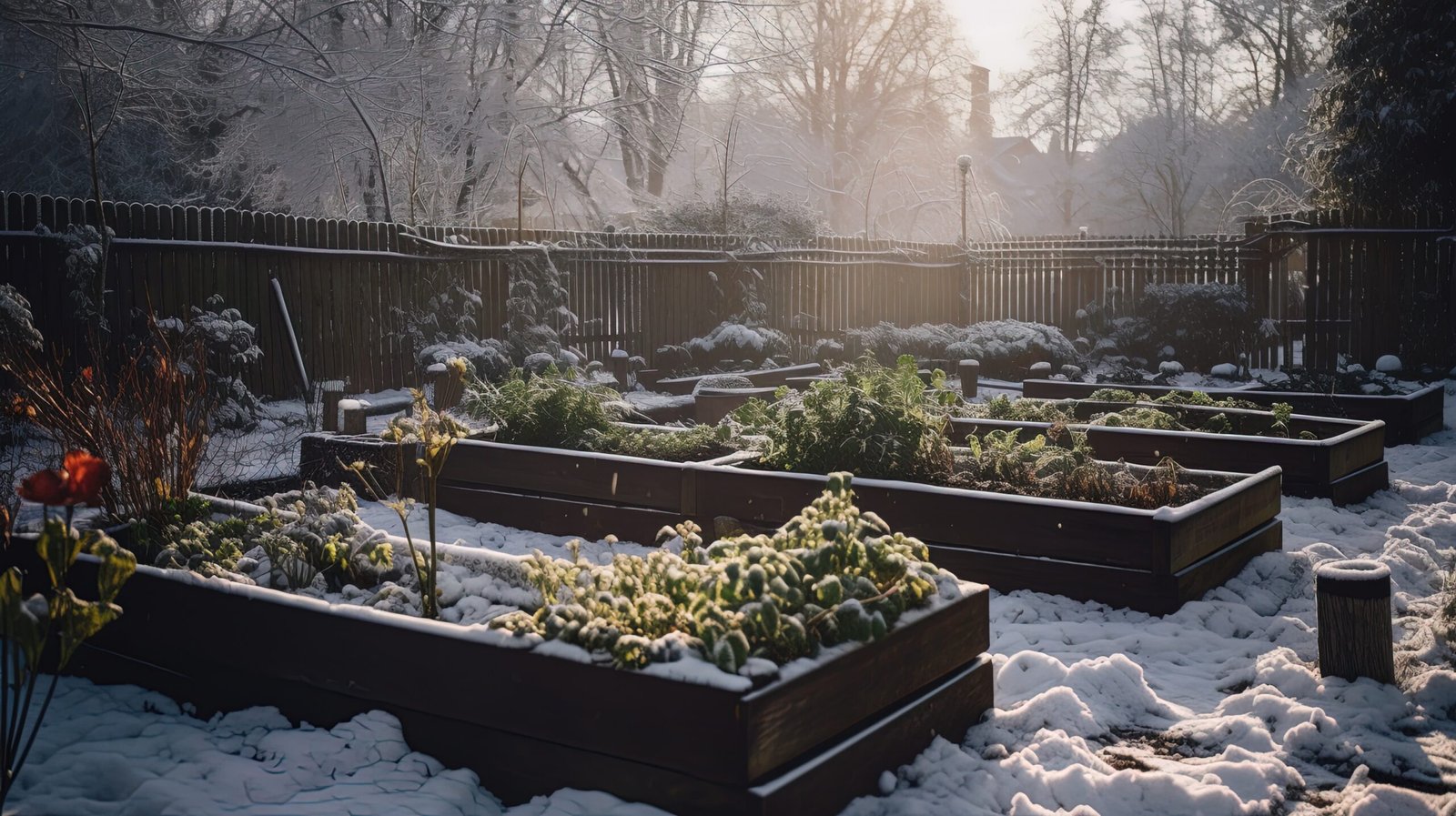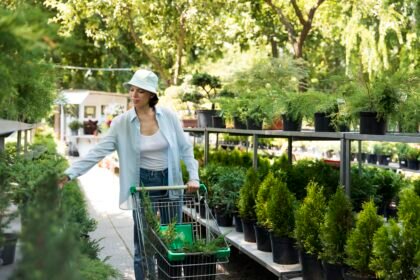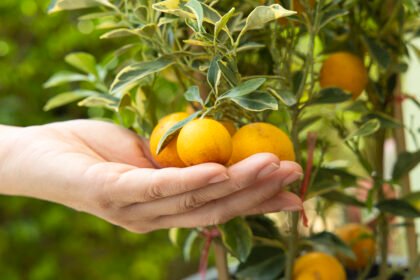Establishing a Cold Weather Garden with the Epic Gardening Method

Cultivating plants at low temperatures has distinct difficulties and advantages. By using effective tactics, it is possible to prolong the duration of your producing season and savor fresh products even in colder months. Starting a cold weather garden the Epic Gardening way takes careful planning, choosing suitable species, and implementing measures to preserve your crops from hard circumstances. This article will examine the strategies for effectively beginning and sustaining a garden in cold weather.
1. Strategizing Your Winter Garden
Evaluate Your Space and Climate
The first step in developing a cold weather garden is to examine your area and understand your local environment. Determine your USDA Hardiness Zone to find the typical lowest temperatures in your region. Assess your garden area for sunshine, wind exposure, and microclimates that could give some protection from the cold.
Choose Cold-Hardy Plants
Select plants that are well-suited for cold season gardening. Many vegetables, herbs, and even some flowers may flourish in chilly temps. Popular cold-hardy veggies include kale, spinach, Brussels sprouts, carrots, and beets. Herbs like parsley, thyme, and chives may also endure chilly weather. Additionally, some blooms like pansies and violas may provide color to your winter garden.
Design Your Garden Layout
Plan your garden layout to optimize sunshine exposure and safeguard plants from severe winds. Raised beds, containers, and vertical gardening are ideal alternatives for cold weather gardening since they provide better drainage and may be more readily handled. Consider using south-facing areas and leveraging walls or fences to generate microclimates.
2. Preparing the Soil
Test and Amend Your Soil
Test your soil to discover its pH and nutrient levels. Cold weather may slow down the microbial activity that breaks down organic matter, so it’s crucial to start with nutrient-rich soil. Amend your soil with compost, well-rotted manure, or other organic materials to boost its fertility and structure.
Mulch for Insulation
Mulching is vital in a cold season garden as it helps insulate the soil, preserve moisture, and reduce weeds. Apply a thick layer of organic mulch, such as straw, leaves, or wood chips, around your plants. This will assist manage soil temperature and keep plant roots from freezing.
3. Starting Seeds and Transplants
Start Seeds Indoors
Starting seeds inside provides you a good start on the growth season. Use seed trays or pots with a high-quality seed-starting mix. Place them in a warm, sunny spot or use grow lights to guarantee ample light. As the seedlings mature, transfer them into bigger pots before taking them outside.
Transplanting Seedlings
Harden off your seedlings by progressively exposing them to external circumstances over a week or two. This lowers transplant shock and helps them adjust to the cooler conditions. Plant them in your prepared garden beds, being care to spacing them adequately for best development.
4. Protecting Your Plants
Use Row Covers and Cloches
Row covers and cloches create a physical barrier against cold weather and frost. They create a microclimate around your plants, retaining heat and protecting them from wind and cold. Use lightweight, breathable fabrics for row coverings, and consider adding plastic or glass cloches for individual plants.
Build Cold Frames
Cold frames are basic constructions with translucent tops that admit sunlight in while storing heat. They are great for prolonging the growth season and safeguarding plants from cold weather. You may make a cold frame using wood, bricks, or straw bales with a transparent plastic or glass cover.
Install a Greenhouse
A greenhouse offers a regulated environment where you may grow plants year-round. It gives protection from harsh cold, wind, and pests while letting you to adjust temperature, humidity, and light. Choose a greenhouse size and style that meets your area and growing demands.
5. Watering and Irrigation
Water Wisely
Watering demands drop during cold weather, but it’s still vital to keep the soil properly hydrated. Water your plants during the warmest part of the day to avoid freezing. Avoid overwatering, since damp soil may lead to root rot and other difficulties.
Drip Irrigation Systems
Drip irrigation systems are great for cold weather gardening because they send water straight to the root zone, eliminating the chance of foliage becoming wet and freezing. Use a timer to automate your watering plan and guarantee continuous hydration.
6. Fertilizing Your Garden
Slow-Release Fertilizers
Use slow-release fertilizers to give a constant supply of nutrients throughout the cold season. These fertilizers are available in granular or pellet form and may be blended into the soil or used as a top dressing.
Organic Fertilizers
Organic fertilizers, such as compost, worm castings, and fish emulsion, are wonderful providers of nutrients that encourage healthy development. Apply them according to the specified rates to prevent over-fertilizing.
7. Pest and Disease Management
Monitor Regularly
Even in cold temperatures, pests and illnesses may impact your plants. Regularly check your plants for indicators of issues and take immediate steps to solve them. Remove and destroy infected plant portions, and apply organic remedies like neem oil or insecticidal soap if required.
Encourage Beneficial Insects
Encourage beneficial insects, such as ladybugs and predatory mites, to help manage pest populations. Planting a variety of flowers and herbs might attract these useful insects to your yard.
8. Harvesting and Maintenance
Timely Harvesting
Harvest your crops often to enjoy fresh food and promote continuing production. Cold-hardy vegetables like kale, spinach, and Brussels sprouts sometimes taste sweeter after a frost. Beets and carrots may be kept in the ground and collected as required, even during winter.
Pruning and Cleaning
Prune and tidy up your garden to eliminate dead or unhealthy plant material. This helps prevent the spread of illnesses and keeps your landscape neat. Regular upkeep also supports healthy development and prepares your garden for the following growing season.
Weed Control
Keep your garden weed-free by routinely weeding and mulching. Weeds compete with your plants for nutrients, water, and light, so eradicating them quickly is crucial for a healthy garden.
9. Maximizing Your Harvest
Succession Planting
Practice succession planting to enhance your crop during the growing season. After harvesting early crops, replace the land with a fresh crop. This strategy assures a continual supply of fresh vegetables.
Intercropping
Intercropping includes growing two or more crops together in the same location to increase production and decrease pest and disease load. For example, putting fast-growing radishes with slower-growing carrots may make optimal use of space.
Vertical Gardening
Utilize vertical planting strategies to optimize space, particularly in tiny areas. Grow climbing plants like peas and beans on trellises, arbors, or vertical containers. This approach promotes air circulation and minimizes the danger of soil-borne infections.
10. Creating a Wildlife-Friendly Garden
Provide Food and Shelter
Attract helpful animals to your garden by offering food and shelter. Bird feeders, nesting boxes, and brush piles may attract birds and small animals that assist reduce pests. Planting a variety of native plants may help benefit local animals.
Water Sources
Provide water sources, such as bird baths or shallow dishes, for animals. In cold weather, ensure that water sources do not freeze by using a heater or changing the water often.
11. Sustainable Gardening Practices
Composting
Composting is a sustainable approach to convert kitchen wastes and garden trash into nutrient-rich compost. Use a compost bin or mound, and frequently stir the material to facilitate decomposition. Compost nourishes the soil, improves structure, and decreases the demand for chemical fertilizers.
Water Conservation
Conserve water by utilizing effective irrigation systems, mulching, and planting drought-tolerant species. Collect and utilize rainwater, and water your plants during the cooler portions of the day to decrease evaporation.
Soil Health
Maintain healthy soil by implementing crop rotation, employing cover crops, and preventing soil compaction. Healthy soil fosters strong plant development, enhances water retention, and decreases erosion.
12. Involving the Family
Gardening with Kids
Involve children in gardening to educate them about nature, responsibility, and the necessity of good food. Create a kid-friendly garden space with easy-to-grow plants, and let children participate in planting, watering, and harvesting.
Family Gardening Projects
Plan family gardening tasks like constructing raised beds, developing a butterfly garden, or beginning a compost bin. These activities give great bonding time and educational opportunities.
13. Enjoying Your Garden
Outdoor Living Spaces
Create outdoor living areas inside your garden to relax and enjoy the benefits of your effort. Set up lounging places, hammocks, or dining spaces surrounded by your gorgeous plants.
Garden Décor
Enhance your landscape with ornamental features like garden art, wind chimes, and fairy lights. These improvements offer uniqueness and charm, making your yard a lovely location to spend time.
Garden Journaling
Keep a garden notebook to track your gardening adventure. Record planting dates, weather conditions, and observations on plant growth and performance. A notebook lets you monitor triumphs and obstacles, making it simpler to plan future plantings.
Final Thoughts
Starting a cold weather garden the Epic Gardening way includes strategic planning, preparation, and upkeep to develop a flourishing, productive, and attractive garden. By following these strategies and procedures, you may enjoy the pleasures of fresh, homegrown vegetables and a tranquil outdoor environment even in the winter months. Happy gardening!




